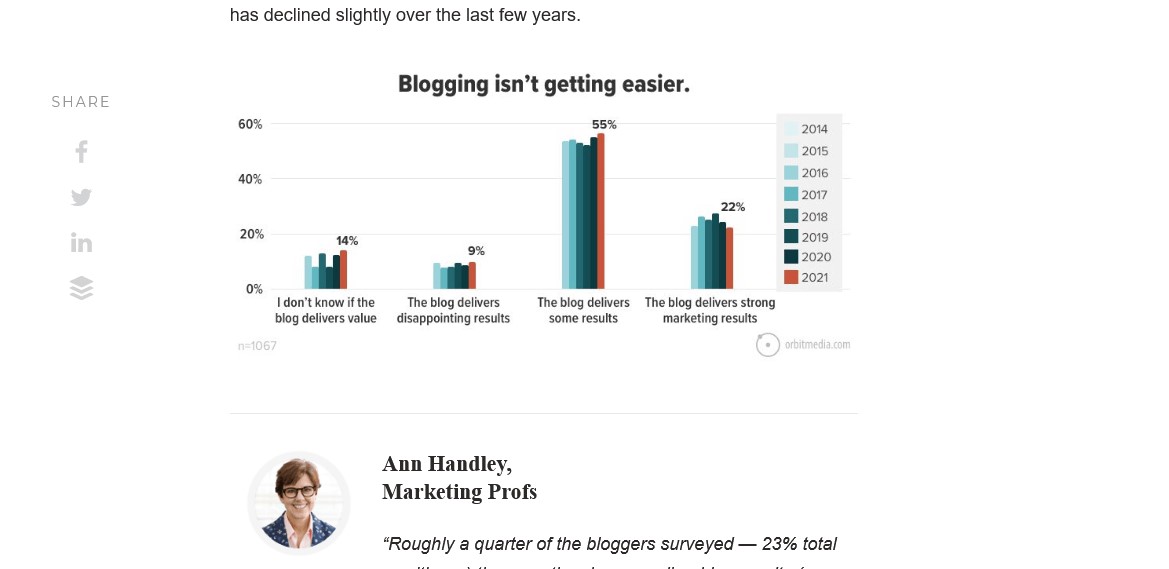Free
How Long Should a Top SEO Blog Post Be?
How long should your SEO blog posts be? We turned to over 100 SEO experts for the answers and their insights will revolutionize your content strategy.
In today’s digital landscape, content is king. With 84% of companies having a content marketing strategy, it’s clear that blog posts are the most popular format. In fact, a staggering two billion posts are published each year.
When it comes to blog posts, the majority of companies rely on organic traffic and search engine optimization (SEO) for distribution. This makes optimizing blog post length a hot topic. The big question is: how long should your blog posts be to rank high on search engine result pages?
If you’ve been wondering about this, we’ve got you covered. We’ve interviewed over 100 SEO experts and conducted thorough research to provide you with a game-changing response that will take your content marketing to new heights.
So, what length should your long-form blog posts be to rank on search engine result pages? According to Yoast, any posts that are at least 300 words long have the potential to rank well. However, shorter posts may struggle to rank highly for competitive topics.
After careful analysis and consultation with industry experts, we’ve found that the ideal blog post length falls between 1500-2500 words. Of course, it’s important to note that the perfect length for a blog post will vary depending on factors like industry, niche, and subject matter.
Research from OrbitMedia reveals that blog posts have been getting longer over the years. The average blog post length currently stands at 1,416 words.
As a result, readers and search engines are increasingly favoring longer posts. Consequently, more bloggers and content marketing teams are prioritizing long-form content that’s at least 1000 words long.
Katheriin Libert, Marketing Head at Outfunnel, shares her experience: “In my 5 years of content marketing and SEO, I’ve found that length still matters when it comes to blog articles! Shorter posts (under 1600 words) simply don’t rank as well. And it seems that 3000+ word articles are the most successful in Google search.”
Adam Connell, the founder of Blogging Wizard, also acknowledges the benefits of longer articles: “Longer articles allow you to include more keywords, especially long-tail keywords.”
Liam, the founder of Inkwell Content Services, advises marketers not to obsess over hitting the maximum word count. He explains, “All content will eventually need updates to maintain its SEO power. So, when writing an article for the first time, it’s wise to leave room for future updates.”
But is blog post length the sole factor that influences Google rankings? Apparently not.
Research from Backlink.io shows that the longest posts don’t always claim the coveted number one spot. The study found that “word count was evenly distributed among the top 10 results. The average first page result on Google contains 1,447 words.”
So, what other factors should you consider when determining the optimal length for your SEO blog posts? Let’s explore.
Discover the secrets to the perfect SEO blog post length based on insights from SEO experts and marketing professionals. Forget the guesswork and follow these essential factors for optimal SEO ranking.
1. Nail the search intent
It’s not about word count, but rather about addressing the search intent. Experts agree that the ideal length is as long as it takes to satisfy the reader’s questions. Quality, relevance, and avoiding unnecessary fluff are key.
2. Comprehensive subject coverage
Don’t just scratch the surface, dive deep into the subject matter. In-depth content that covers a topic extensively performs better in search rankings. Google values topical authority, which is best demonstrated through long-form articles with multiple headers and keywords.
3. Learn from competitors
Don’t reinvent the wheel. Analyze the length of high-ranking articles in your niche for guidance. If similar articles are ranking well, aim for a similar word count. Going excessively long might backfire.
4. Harness the power of SEO tools
Leverage AI-powered tools like SurferSEO and Clearscope to get a rough estimate of word count. Be cautious with their suggestions as they may not always be accurate. Use the tools as guides and optimize your content by incorporating relevant subtopics and keywords they recommend.
With these insights, you can confidently create SEO blog posts that captivate readers and climb up the search rankings. Don’t leave your success to chance, follow these proven strategies for blog post greatness.
5. Supercharge Your Blog Posts with User-Friendly Features

Do you want your shorter blog posts to stand out to both readers and search engines? Look no further! By incorporating user-friendly post features, you can create engaging content that grabs attention. Here are a few must-have features:
📷 Screenshots and images
📊 Infographics
🎥 Embedded videos
✒️ Readability aids like bullet points
🔍 Navigation tools like a table of contents and back to top buttons
🌓 Light and dark mode options
Just take a look at Orbit Media’s interactive post – it’s packed with graphs and quoted text, yet still enjoyable to read!
But don’t just take our word for it. Micaela, an SEO and content marketer, explains that readers appreciate longer posts if they have navigation options to jump to specific sections. And Nathan Hughes, a marketing director, affirms that a well-optimized short post can rank higher with the right keywords, backlinks, alt texts, and media-rich content.
Don’t let the length of your post hold you back. Create a captivating experience for your readers, and search engines will reward you for it.
Introducing Jasper: Your Secret Weapon for Long-Form SEO Articles
Writing high-quality long-form content can be daunting, especially when you need to churn out articles between 1500-2500 words regularly. That’s where Jasper comes in. This incredible AI writing assistant, trained by expert copywriters, makes content marketing a breeze.
With over 52 templates to choose from, Jasper has you covered for any content need. When tackling a long-form piece, start with Jasper’s Blog Outline template to generate a comprehensive outline. Then, use the Jasper Long-Form Assistant template to fine-tune your content.
Simply click “Generate” and watch Jasper work its magic. Want to see it in action? Check out the Jasper Bootcamp to level up your skills. But first, sign up for Jasper to effortlessly write blog content of any length.
Unleash the power of Jasper and take your blog posts to new heights!






























